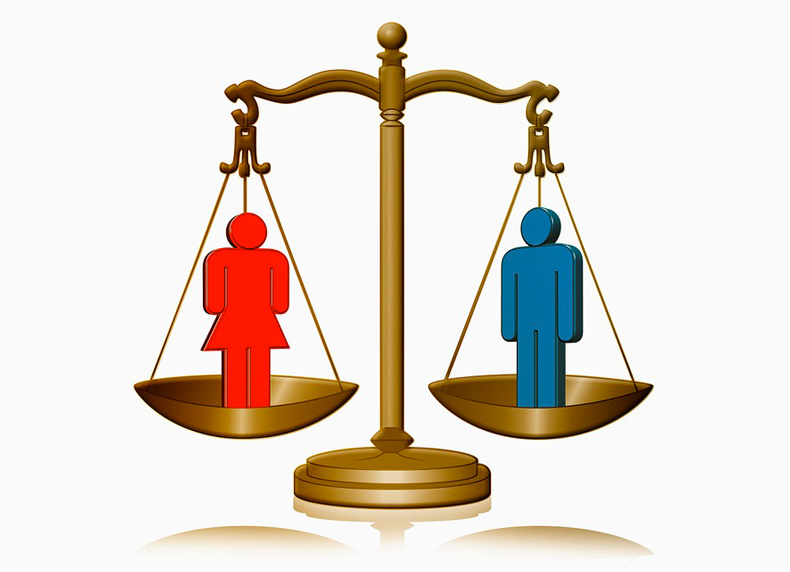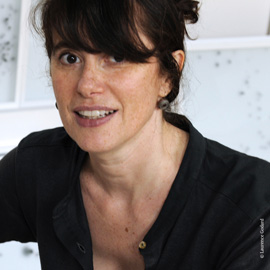Should gender parity really be imposed?

But gender parity is no simple matter and such measures are still under debate. In higher education and research, the jury is out on whether obligatory parity is the most appropriate means to achieve true equality. We asked women alumni and academics from ENS to share their views.
Regularly recognizing women’s achievements
Christine Maigne, professor at Ensaama Olivier de Serres and visual artist, is anxious to see women better represented in her professional field.
“You might think that discrimination is less prevalent in the art world than in more formatted professional spheres, but it nonetheless exists in a more insidious way. Studies of women’s inclusion in important exhibitions, museums or collections show that women are markedly under-represented. I belong to a discussion group for women artists who address these issues.”
Imposing gender parity in major exhibitions, or at least ensuring that more women are included, is liable to change attitudes. Large institutions sometimes attempt specific initiatives to improve the balance, such as the exhibition of works by women artists from the Centre Pompidou collection (“Elles”, 2009, Camille Morineau, exhibition curator). MOMA did the same in 2010 with “Modern Women: Women Artists at The Museum of Modern Art”.
The Tate Modern in London has a much more exemplary approach in this respect thanks to the ongoing policy established by current director Frances Morris. Morris has been working for years to promote female artists in the Tate Modern’s collections.
Gender parity policies can be counterproductive
Elise Lorenceau, CNRS senior researcher at LIPhy, doubts the effectiveness of certain measures introduced under the Gender Equality Act:
“Often, it is not academics that establish gender inequalities but the administration and politicians. For example, requiring parity on administrative or academic committees (such as PhD examination committees or selection committees) when women are under-represented is counterproductive. The women find themselves over-solicited, which is detrimental in several ways.
“First, they have less time for research than their male colleagues because sitting on this type of committee can be very time-consuming. Second, as they are not selected for their competence in a given field of research but for their gender, they can find themselves less qualified than their male counterparts in the subject under discussion, which is hugely detrimental for the female academic community!”
Patricia Bouyer-Decitre, CNRS senior researcher and assistant director of LSV, ENS Paris-Saclay, shares this opinion.
“One point that I find increasingly problematic is that parity is required by law for all the committees we form. In my discipline, computer science, it’s completely unrealistic,” she said.
“According to CNU figures, only 24 percent of lecturers and less than 20 percent of full professors are women; the figures are similar at CNRS. This makes the workload completely unmanageable and you have to learn to turn invitations down.”

Christine Maigne
Professor at Ensaama Olivier de Serres and visual artist

Elise Lorenceau
CNRS senior researcher at LIPhy

Patricia Bouyer-Decitre
CNRS senior researcher and assistant director of LSV
Choices, careers and stereotypes
Some women may feel advantaged by their gender at various moments in their careers.
“Being a woman in a discipline in which women are under-represented—mechanics and physics in my case—has helped me in my career,” explained Elise Lorenceau. “I think there are several times when it has tipped the balance in my favour. When reviewing applications from equally qualified candidates, a woman is more likely to be remembered than a man if they are in the minority; consciously or not, this can influence a selection panel.”
However, women can also encounter obstacles in their careers, often related to pregnancies.
According to Christine Maigne, “as in all fields, having a child is a critical stage but in a more singular way in the art world. I admit that I sometimes chose to keep quiet about it, or at least not bring it up, because I felt that it would not work in my favour”.
It should also be noted that women are still under-represented in science and technology because of persistent stereotypes. Gender diversity in science subjects is a real social issue.
As Dr. Bouyer-Decitre stressed, “gender equality cannot be achieved in my field without a greater incentive for girls to take science subjects from middle or high school onwards. The widespread image of computer scientists as geeks distorts perceptions of computer science.
“Moreover, I wasn’t planning on doing computer science when I arrived at ENS Cachan. But the teaching I got once I was there put paid to that off-putting image. This naturally raises the question of teaching computer science as a discipline at an earlier stage at school.
